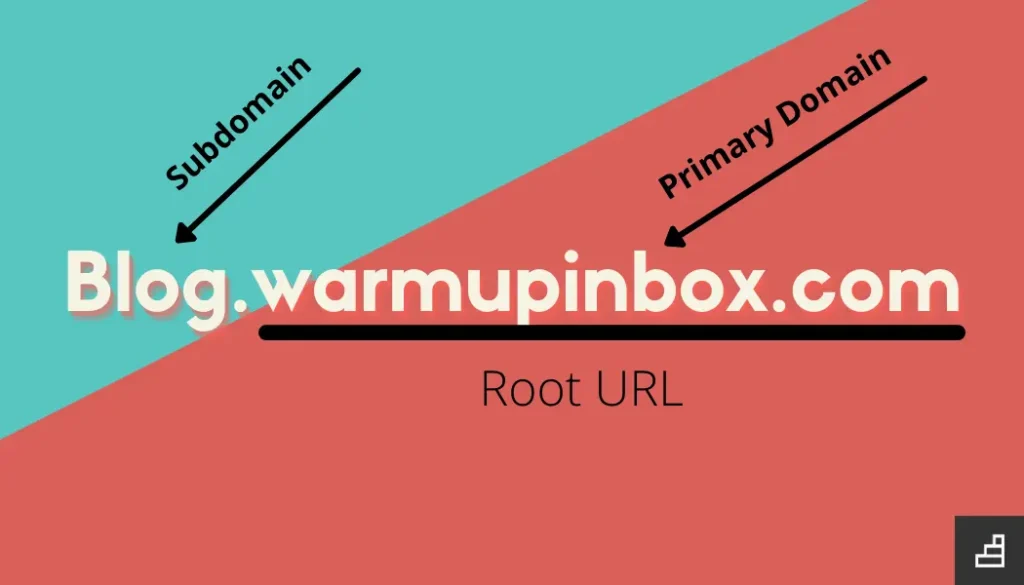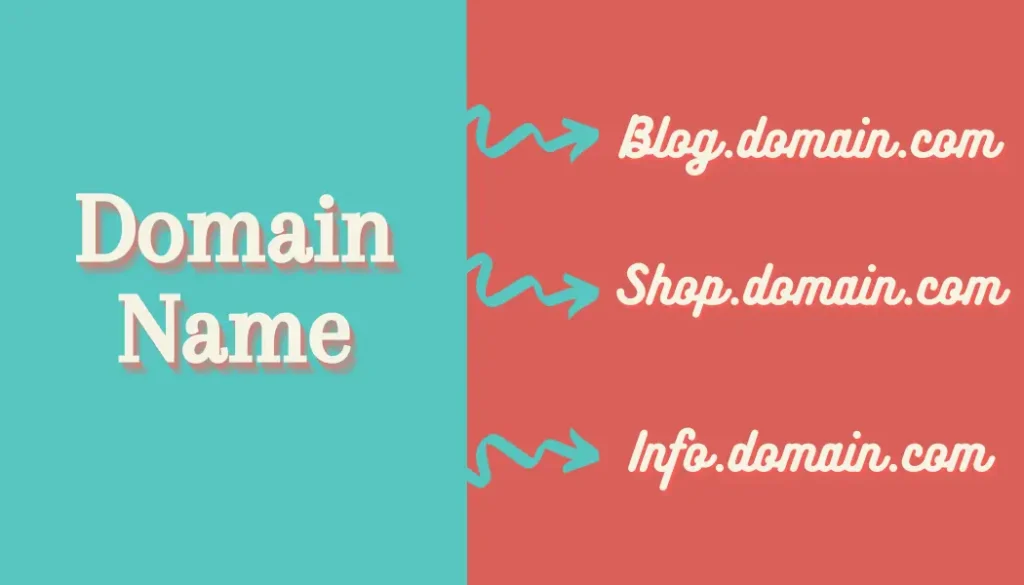
Subdomains: Everything You Need To Know in 2025
When you are organizing outreach campaigns under sender domains, there are a few approaches you can take for getting them setup and organized. The standard way that people go about this is to simply get the primary domain’s DNS setup for email delivery. This means you set up an email workspace/mail server directly under the domain and set up the standard email security protocols under it.
But what if you want to utilize one single domain that already has a workspace under it that you do not want to remove?
In general it’s always better to perform outreach under separate sender domains with their own IP reputation, but sometimes it makes more sense for a business to perform certain outreach tasks under their own domain rather than a newly registered domain that is “Similar” to their primary domain.
So how do you have multiple email environments under a single domain? The answer to this is by creating subdomains. A subdomain is an additional part to your domain name that is separate from the parent domain, meaning that you have a different DNS environment and records. The act of creating subdomains is primarily done in order to organize large websites or organizations with complicated DNS configurations.
Before getting into the article, I wanted to mention first and foremost that creating subdomains does NOT separate your parent domain from your sender sub-domain unless you separate the subdomain’s IP address from the parent’s IP address. Sender reputation will ALWAYS resolve back to the IP address of the parent domain unless you specify an IP address to point towards a subdomain. The act of just creating a subdomain will not solve sender reputation issues under a parent domain, it will only add a layer of abstraction to it since sender reputation always resolves back upwards to the parent domain and its associated IP address.
In this article I will be going over subdomains, how they are utilized in outreach campaigns, and how you should go about utilizing them for cold email outreach. There are a lot of misconceptions surrounding sub-domains that should be cleared out and understood to email marketers, so let’s take a closer look at this topic.

What Is A Subdomain?
A subdomain is an additional part of your main domain that acts as a separate DNS zone and is controlled by the primary parent domain. A common example of a subdomain in practice is whenever you see a period included within an email that isn’t present in the associated TLD prefix (I.E the period in .com, .org, .io, etc). So if you see that you have received an email from the address johndoe@example.domain.com, you can easily spot that “Example” is a subdomain of “Domain.com” and that the mail server responsible for delivering this email to you is hosted under this subdomain at example.domain.com .
Why Do Organizations Use Subdomains?
The primary reason why marketers and individuals utilize a subdomain is for organizational purposes. The DNS of a domain can get cluttered very quickly if you are utilizing a single domain for hosting your website, hosting various records utilized for other tools and services your business is utilizing, as well as all the various records that are typically associated with a workspace under a given domain.
DNS is extremely sensitive and can break easily if two records conflict or a lookup address expires, so for many organizations it makes sense to separate services, functionality, or, specifically utilized records into their own subdomains in order to keep things organized and manageable as you add more and more DNS records to a domain. This is primarily why some organizations utilize subdomains even for their own internal communication tools. Creating a subdomain makes things easier for whoever is managing the DNS of a domain and separating all mail activity to its own subdomain makes it easier for everyone involved.
For marketing professionals at organizations, many will simply utilize their existing email workspace under a subdomain in order to perform email marketing/outreach. On the surface this makes the most sense because as a marketer, you want all emails to be originating from the primary domain that your website is hosted under. This allows recipients to instantly verify what organization this email is coming from (By simply trying to visit the website of the associated domain of an email address and visually verify that the domain they entered does not redirect to another website), and know that its authentic, even if it’s behind a mail.domain.com subdomain.
Even though being under your host domain is beneficial for making your emails seem more authentic, this isn’t a good practice to perform. Marketing professionals will typically stick to utilizing their existing subdomain and their existing sender email addresses for this reason simply because it is easier, cheaper (since you aren’t purchasing new sender domains and workspaces), and doesn’t require any additional setup work outside of creating new email addresses if the situation requires it. So why is this not a recommended practice despite it being the most cost effective solution?

Subdomain Misconceptions
At Warmup Inbox, we have seen quite a few people come in who have been confused regarding how subdomains work and their relation towards email marketing and sender reputation. I want to state first and foremost that creating a subdomain does NOT separate your primary domain’s sender domain from that of your subdomain UNLESS you specify via your DNS that your subdomain is being hosted at another IP address separate from that of your host domain’s IP address.
There are plenty of people who seem to think that creating a subdomain will somehow solve their sender reputation problems if they are experiencing high spam rates under their parent domain, but this does not make any difference. The reason why this does not make a difference is due to sender reputation and how ESP and ISP associate and assign a sender reputation score.
All sender reputation resolves upwards back to the primary IP address of the parent domain, as well as the primary IP address of the associated mail server to this parent domain that was responsible for performing the actual act of sending the email. When you are setting up a standard subdomain (not pointing this subdomain to another separate IP address), it will inherit the sender reputation of the host domain. So unless you are specifically pointing your subdomain at another IP address, hosted at another address, all your sender reputation will be inherited by the subdomain.
One of the primary ways this misconception has spread around is due to poorly written articles that do not fully explain how you should go about properly setting up a subdomain in order to maintain a layer of separation between the parent domain and the sub domain. Many of these articles will claim that creating a subdomain will prevent your parent domain from any sender reputation issues, but the key detail many of these articles leave out is that you need to directly specify via a DNS record (A/AAAA Records) that this subdomain is hosted at another location, and not inherited by the parent domain into a separate section.
Should You Utilize Subdomains For Email Outreach?
If you are a business who prefers to keep all email outreach under one host domain, then a properly setup subdomain for email outreach is a great way to keep all types of email activity contained under a familiar domain so recipients do not question the source or origin of a received email.
While this type of solution makes sense for some businesses, it may not be a fit for all companies performing email marketing. If you are wondering if you should be utilizing a subdomain for your email marketing efforts, I would advise you to ask yourself the following questions.
- What benefit do you think you will receive from contacting recipients via your own sub-domain?
- Am I planning on performing cold email outreach?
- Will I be performing email outreach long term?
If it makes sense for your business to contact recipients directly from your primary domain, under a subdomain for familiarity reasons, than I would suggest going through the effort of setting up a subdomain properly and having it point to another host IP in order to maintain that layer of separation for your sender reputation.
For cold email outreach and long term outreach efforts, I highly stress and recommend that you simply register new sender domains and have these domains be similar and relevant to your primary domain. I recommend this approach primarily because…
- It’s a lot easier to go this route (Registering a domain + creating + setup for a domain can take less than an hour of time)
- It makes sure there is a layer of separation between the primary domain of your business, and that of your sender domains
- You have more flexibility with the setup process under unique parent sender domains.
I also want to stress that either setup option for preparing sender domains is completely viable and it’s all up to your situation and what makes the most sense for your business and industry.
As long as you take the time to make sure that your subdomain is properly configured to not resolve back to the parent domain’s reputation, then you would receive virtually equal deliverability results between performing email outreach under a subdomain versus performing outreach under a dedicated sender domain.
Conclusion
The topic of subdomains can add a lot of confusion to the already confusing act of performing email marketing properly and effectively. While you can set up a subdomain to not inherit the sender reputation of the parent domain, you need to specify this via DNS while you are setting up said subdomain in order to keep this reputation separate from your host domain. As long as you take all the proper steps for creating a subdomain, you can safely and effectively perform email marketing under your host domain.



